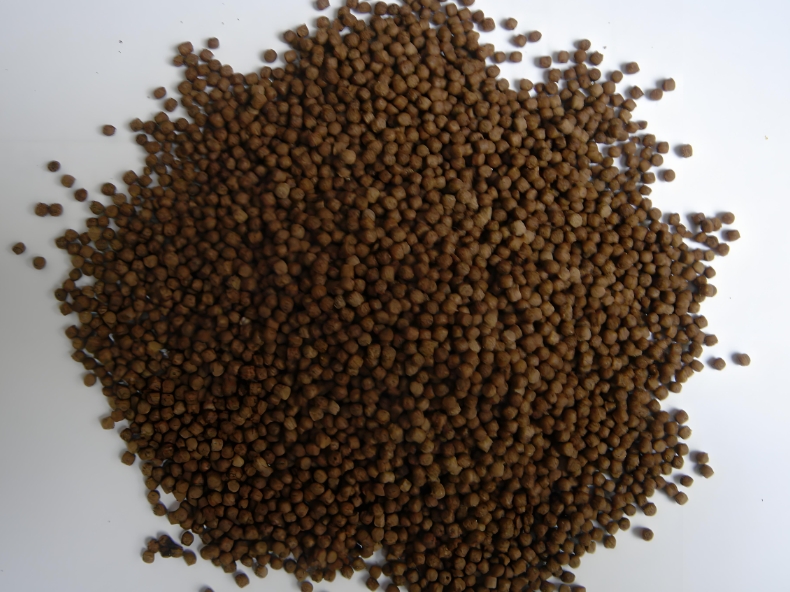A ciência por trás da colher: Desvendando o moderno processo de produção de ração para peixes
For many, feeding fish is a simple act of sprinkling pellets into the water. But behind those small, uniform bits lies a sophisticated blend of nutritional science and advanced engineering. The production of modern fish feed is a precise and multi-stage process designed to maximize growth, ensure health, and minimize environmental impact. Let’s pull back the curtain on how it’s made.
Step 1: Formula Creation and Ingredient Sourcing
It all begins in the laboratory. Nutritionists formulate recipes based on the specific dietary needs of the target species (e.g., salmon, tilapia, shrimp). Key components include:
- Fontes de proteína: Fishmeal (from sustainable fisheries), soybean meal, corn gluten, and increasingly, novel proteins like insect meal or algae.
- Lipids (Fats): Fish oil, vegetable oils (like soybean or canola oil), which are crucial for energy and omega-3 fatty acids.
- Carboidratos: Grains like wheat and corn act as binders and energy sources.
- Micronutrients: Precise blends of vitamins, minerals, and amino acids are added to create a complete and balanced diet.
- Fichários: Natural polymers like wheat gluten are used to ensure the pellet maintains its integrity in water.
Step 2: Grinding and Weighing
The raw ingredients arrive in various forms and sizes. They are first ground into a fine powder using hammer mills or crushers. This creates a uniform particle size, which is critical for two reasons: it allows for a homogenous mix so every pellet contains the same nutrients, and it prepares the material for the next stage—extrusion.
Each ingredient is then precisely weighed according to the secret formula and delivered to the mixer.
Step 3: Mixing
The powdered ingredients are fed into a large, industrial mixer—often a double-shaft paddle mixer—that operates like a colossal kitchen stand mixer. This step is crucial to achieve a perfectly uniform blend. Even a minor inconsistency here would mean some fish get a protein-rich meal while others get mostly carbohydrates.
Step 4: The Heart of the Process: Conditioning and Extrusion
This is where the magic happens. The mixed powder is transferred to an extrusora, a machine that uses heat, moisture, and pressure to cook the mixture and form it into pellets.
- Conditioning: Steam is injected into the powder as it enters the extruder. This hydrates and pre-heats the mixture, beginning the cooking process (gelatinizing the starches), which makes the nutrients more digestible for the fish.
- Extrusão: The conditioned mash is forced through a barrel by a giant rotating screw under high pressure and temperature. At the end of the barrel, the paste is pushed through a morrer—a metal plate with precisely sized holes. This is what gives the pellets their shape and size (sinking vs. floating).
- The Floating Trick: The intense heat and pressure cause the moisture to flash into steam as the pellet exits the die. This creates tiny air pockets within the pellet, making it float. For sinking feed, the mixture is less expanded and cut differently.
As the continuous strand of cooked material exits the die, a rotating knife cuts it into precise pellets.
Step 5: Drying and Cooling
The newly formed pellets are soft and moist, making them susceptible to mold. They are conveyed through a multi-stage dryer, where hot air removes the excess moisture, bringing it down to a stable level (typically around 10%). After drying, the hot pellets are cooled to room temperature using ambient air to prevent condensation in storage bags.
Step 6: Coating (Post-Agglomeration)
After cooling, the pellets are ready for their final nutrient boost. Liquid coatings—often rich, expensive fish oils, vitamins, or other attractants (like amino acids)—are sprayed onto the pellets in a vacuum coater or a drum coater. The vacuum helps pull the oils deep into the porous pellets, ensuring they are retained and not just washed off in the water.
Step 7: Screening and Packaging
The dried and coated pellets are passed over vibrating screens to remove any fines (small broken pieces and dust). These fines are recycled back into the process. The perfect, uniform pellets are then sent to be packaged in bags, or in large bulk containers for commercial fish farms.
Quality Control: A Constant Vigilance
Throughout this entire process, rigorous quality control checks are performed. Labs test raw ingredients for contaminants and nutrient profiles. They also constantly sample the final product to ensure it meets the specified standards for size, durability, nutritional content, and water stability.
Conclusão
What seems like a simple pellet is, in reality, a marvel of modern food technology. The production of fish feed is a carefully controlled process that transforms raw agricultural and marine ingredients into a highly nutritious, sustainable, and engineered diet. This scientific approach is fundamental to supporting a healthy aquaculture industry, which plays a vital role in feeding a growing global population.








